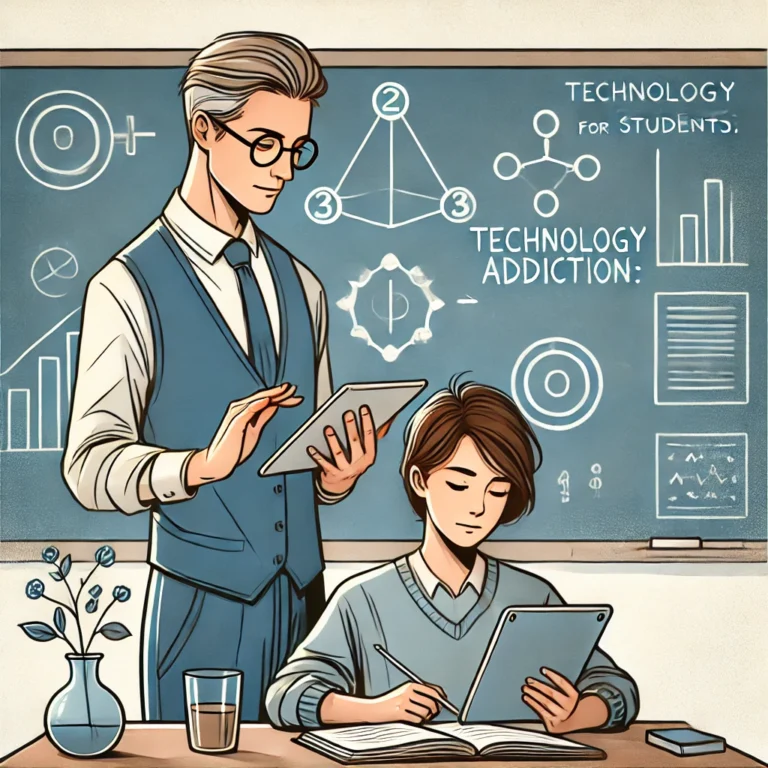In today’s digital age, students are increasingly glued to their devices. Whether it’s smartphones, tablets, or gaming consoles, technology has become a dominant force in their lives, and while it offers many benefits, it also poses significant risks. One of the most alarming trends is technology addiction, which can have a serious impact on students’ mental health, academic performance, and social skills. As educators, teachers are uniquely positioned to help students navigate the digital world responsibly. Here are some strategies for addressing technology addiction in the classroom and beyond.
1. Recognize the Signs of Technology Addiction
Before addressing the issue, it’s important for teachers to recognize the symptoms of technology addiction. Common signs include:
- Increased irritability or anxiety when separated from devices.
- Difficulty focusing on non-digital tasks or homework.
- Poor academic performance due to excessive screen time.
- Social withdrawal or reluctance to engage in face-to-face conversations.
If you notice these behaviors in your students, it may be time to have a conversation with them or involve parents and school counselors.
2. Set Clear Boundaries for Technology Use in Class
While it’s impossible to completely eliminate technology from students’ lives, especially as it becomes an integral part of education, setting clear boundaries can help minimize distractions. Establish rules such as:
- No phone use during class unless it’s for academic purposes.
- Scheduled “tech breaks” during the day, where students can check their devices for a limited time.
- Designate device-free zones in the classroom to encourage more face-to-face interaction.
Being firm but fair about technology rules can foster a more focused and engaged learning environment.
3. Promote Digital Literacy
One of the best ways to combat technology addiction is by teaching students how to use technology responsibly. Digital literacy isn’t just about understanding how to use devices—it’s about being aware of the potential dangers of overuse, such as cyberbullying, misinformation, and mental health impacts. Educate your students on the importance of balance and setting boundaries for themselves, such as:
- Using apps to monitor and limit screen time.
- Encouraging breaks from screens during homework and study sessions.
- Highlighting the benefits of real-world activities and hobbies over virtual ones.
By promoting digital literacy, you empower students to take control of their own habits.
4. Incorporate Non-Digital Activities
Students are often so absorbed in technology that they forget the joys of non-digital activities. Try incorporating more hands-on, interactive lessons that don’t require screens, such as:
- Group discussions, debates, or storytelling exercises.
- Art, crafts, or physical education activities that foster creativity and movement.
- Outdoor learning opportunities like nature walks or science experiments.
These activities can help students reconnect with their surroundings and peers, promoting a healthier balance between online and offline worlds.
5. Encourage Open Conversations about Technology
Finally, encourage open conversations with students about how they use technology. Many students are aware that they spend too much time on their devices but feel unable to change their habits. As a teacher, you can offer a supportive ear and help them develop strategies for reducing their screen time. Ask them questions like:
- “How do you feel after spending a long time on your phone?”
- “What are some of your favorite activities that don’t involve technology?”
- “How can we make more time for those activities in your daily routine?”
Creating an open dialogue helps normalize the conversation around technology addiction and may prompt students to reflect on their own behavior.
Technology is here to stay, but that doesn’t mean students should be slaves to their devices. As teachers, you have the power to guide your students toward a healthier relationship with technology. By setting clear boundaries, promoting digital literacy, and encouraging a balance between screen time and real-world activities, you can help your students overcome technology addiction and thrive both in and out of the classroom.


